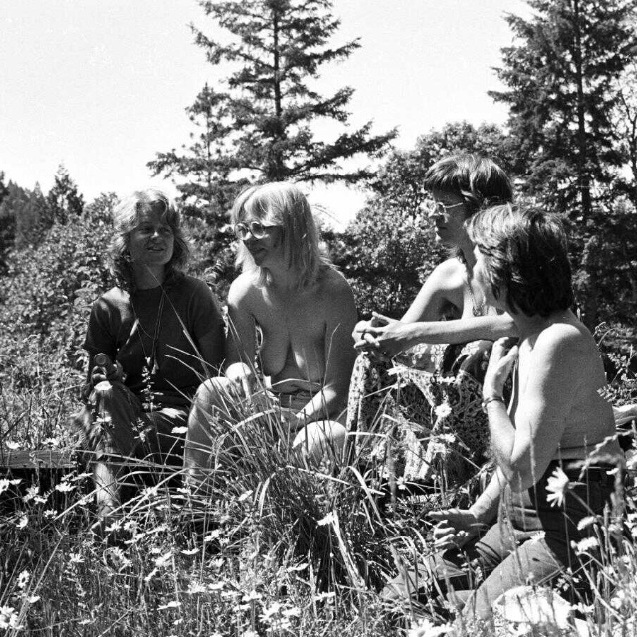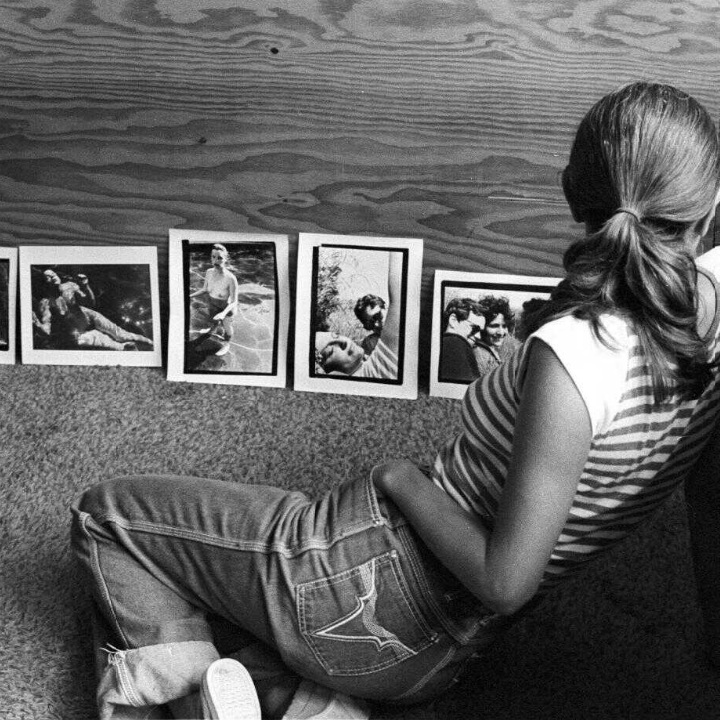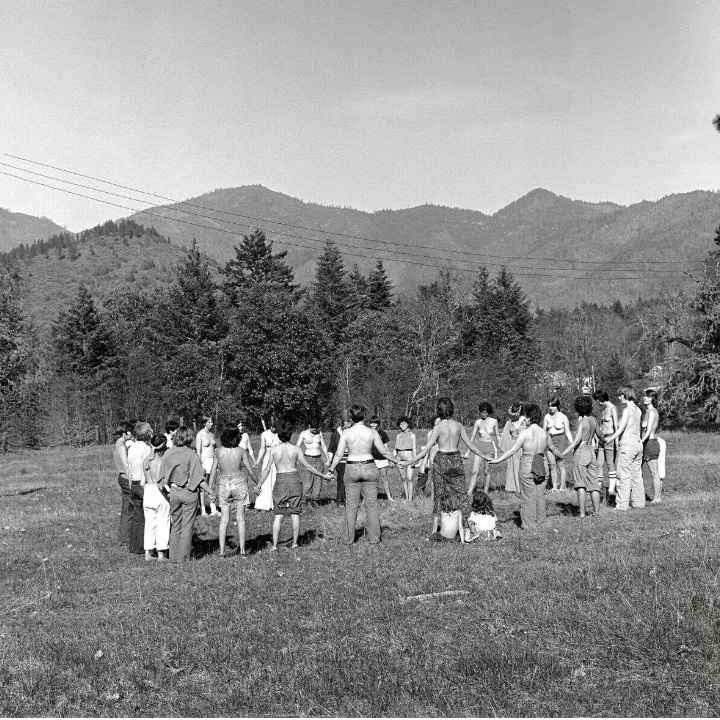“OUR SHAPES AND OUR LIVES”: PHOTOGRAPHY OF OREGON’S LESBIAN LANDS
upcoming talk, QUEER ECOLOGY PANEL, ART + ENVIRONMENTAL JUSTICE SYMPOSIUM
ABSTRACT: In 1971, two women left behind middle-class lives, heterosexual partners and East Coast culture to drive 3,000 miles west and join the growing lesbian land movement in Southern Oregon. When Ruth and Jean arrived at Mountain Grove, they took the name of the place, leaving behind the patriarchal traces of fathers and husbands in favor of a surname which married them both with the land and each other. This story demonstrates the dedication of lesbian separatists in Oregon to radical rebirth and reorientation of themselves towards nature. It is also exemplative of the absolute blending of body and subjectivity with the land itself, a distinct feature of their “culture of nature,” as it has been termed by Catriona Sandilands in her theorization of queer ecology. While this “culture of nature” has been considered from a sociological point of view by Sandilands, the artworks created within that culture have yet to be seriously considered from an art historical or visual culture perspective. This paper argues that the photography produced on these lands by Ruth Mountaingrove and Tee Corinne is also critical to their construction of a singularly queer and feminist environmentalism.
Mountaingrove and Corinne were two prominent photographers who ran a series of photography workshops called Ovulars (instead of “seminars”) on the lesbian land Rootworks. Their papers at the University of Oregon Special Collections contain over 200 boxes of material ranging from correspondence, publications, creative and personal writing, drawings, negatives and photo prints. Analysis of a selection photographs from this archive reveals how Mountaingrove and Corinne blur the boundaries between bodies and land, and therefore between portraiture and landscape, in pursuit of both reflecting and producing a unique queer ecology. This paper considers the photos’ relationship to the feminizations of nature and landscapes throughout art history, in order to examine further how intersections of sexuality, ecology, and space may present a unique case study of both subversion and perpetuation of patriarchal and capitalist notions of nature, landscape and place.
These subversions have always been core goals of Oregon’s lesbian intentional communities. Rootworks, the community on which the Ovulars were held, was founded by Ruth and Jean in the 1970s amidst the “back to the land” movement in the United States, which was so profusive amongst queer women in Oregon that the southern part of Interstate 5 is sometimes to referred as the “Amazon Trail.” Sandilands has defined common characteristics of these communities as collective ownership of rural land, withdrawal from and resistance of patriarchy and capitalism, feminizing and eroticizing of the landscape, a physical embodied experience of nature, and the political reclamation of rurality for lesbian identity. These tenets manifest theories of the radical feminist and counterculture movements of the 1960s, and yet were controversial amongst feminist and queer communities, and their legacy continues to be so today, due in part to instances of exclusion and essentialism.
Scholars like Sandilands have begun to address the sociological legacy of the lesbian lands and their tensions, but an aesthetic legacy has yet to be considered. This paper utilizes theories of queer ecology, feminism and cultural geography to consider further the aesthetic significance of the Ovulars and the larger visual culture of lesbian separatist communities. It considers how the photographs reflect the “culture of nature” as Sandilands has described it, and argues that they both subvert and perpetuate art historical tropes of women and nature, whilst strategically deploying photography as a medium to document their claim to rural space for the queer female body.
Hallie Ford School of Graduate Studies presents the 2019 Symposium:
Art and Environmental Justice
November 22-23, 2019
511 NW Broadway, Portland, Oregon 97209
A free interdisciplinary symposium to promote dialog on the interplay of environmentalism, social justice, education, design, and the arts. Students, scholars, activists, educators, designers, and artists working on environmental justice issues will explore the politics surrounding systemic biases and the ways that environmental degradation and climate change intersect with race, gender, and class to create disproportionate outcomes on both a local and global scale. The day’s agenda will place the arts at the center of these conversations, investigating how creative practices contribute to community and global struggles for environmental justice.
Friday November 22 at 6:30pm: Keynote lecture by Macarena Gomez-Barris, Director of the Global South Center (GSC), a research center that works at the intersection of social ecologies, art / politics, and decolonial methodologies. Macarena is the author of Beyond the Pink Tide: Art and Politics in the Americas (UC Press, 2018), The Extractive Zone: Social Ecologies and Decolonial Perspectives (2017), Where Memory Dwells: Culture and State Violence in Chile (2009), and is co-editor with Herman Gray of Towards a Sociology of the Trace (2010).
Saturday November 23 from 10am to 6pm: A full day of events including panels on Queer Ecologies, Art + Activism, and Pedagogical Strategies + Community Based Learning, as well as a participatory workshop on the intersection of Environmental and Racial Justice.
Opening Reception for an Exhibition of artwork curated by HFSGS graduate students around the central theme of environmental justice to follow Symposium at 6pm.
The 2019 HFSGS Symposium is FREE and open to the public. More info on PNCA's website


